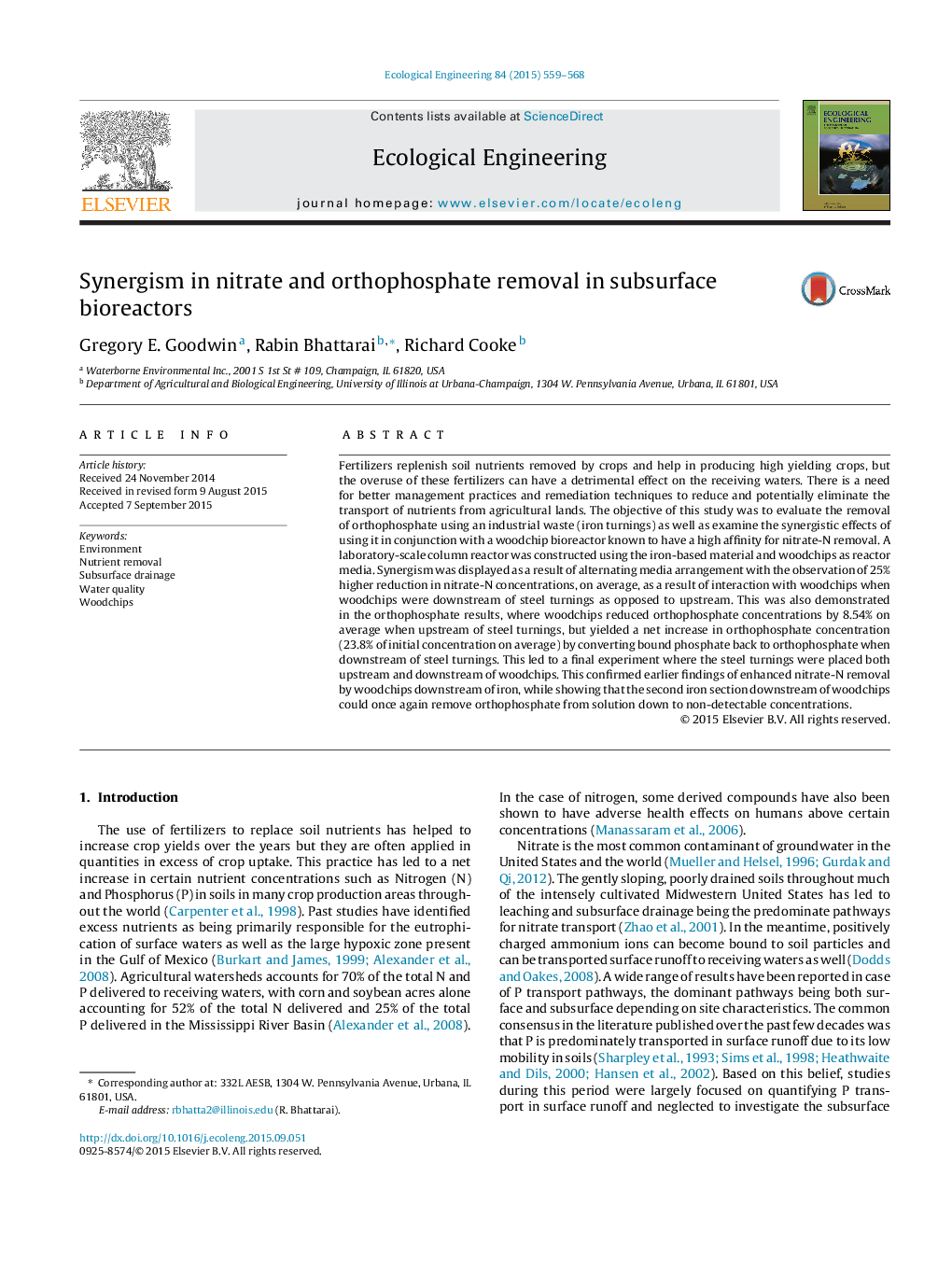| Article ID | Journal | Published Year | Pages | File Type |
|---|---|---|---|---|
| 4388826 | Ecological Engineering | 2015 | 10 Pages |
•The effect of hybrid reactor media on N and P removal was investigated.•Higher reduction in N occurred when woodchips were downstream of steel turnings as opposed to upstream.•Woodchips alone were not effective in P removal.•Iron sections upstream and downstream of woodchips resulted in high removal of both N and P.
Fertilizers replenish soil nutrients removed by crops and help in producing high yielding crops, but the overuse of these fertilizers can have a detrimental effect on the receiving waters. There is a need for better management practices and remediation techniques to reduce and potentially eliminate the transport of nutrients from agricultural lands. The objective of this study was to evaluate the removal of orthophosphate using an industrial waste (iron turnings) as well as examine the synergistic effects of using it in conjunction with a woodchip bioreactor known to have a high affinity for nitrate-N removal. A laboratory-scale column reactor was constructed using the iron-based material and woodchips as reactor media. Synergism was displayed as a result of alternating media arrangement with the observation of 25% higher reduction in nitrate-N concentrations, on average, as a result of interaction with woodchips when woodchips were downstream of steel turnings as opposed to upstream. This was also demonstrated in the orthophosphate results, where woodchips reduced orthophosphate concentrations by 8.54% on average when upstream of steel turnings, but yielded a net increase in orthophosphate concentration (23.8% of initial concentration on average) by converting bound phosphate back to orthophosphate when downstream of steel turnings. This led to a final experiment where the steel turnings were placed both upstream and downstream of woodchips. This confirmed earlier findings of enhanced nitrate-N removal by woodchips downstream of iron, while showing that the second iron section downstream of woodchips could once again remove orthophosphate from solution down to non-detectable concentrations.
